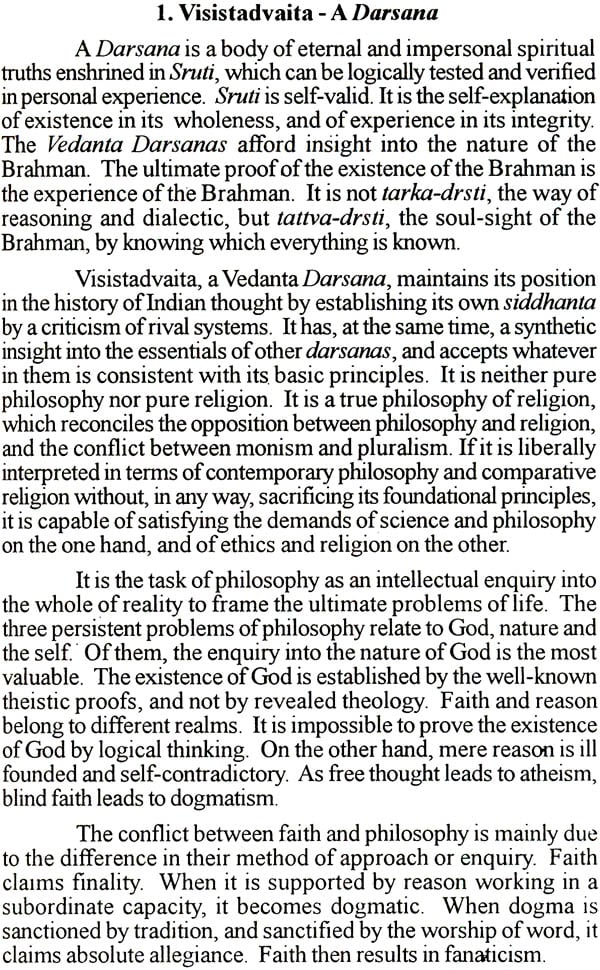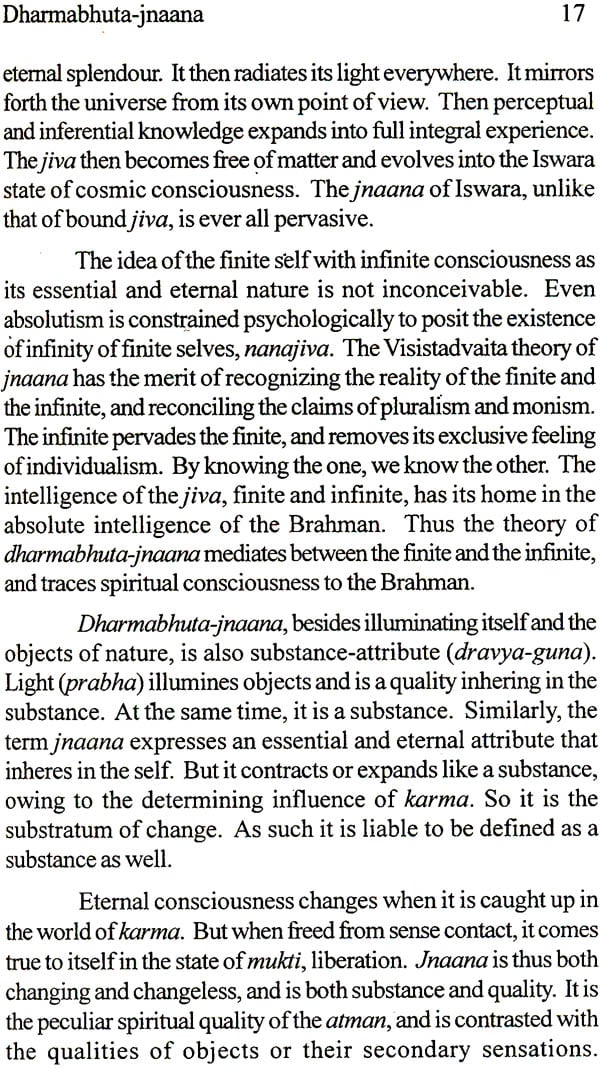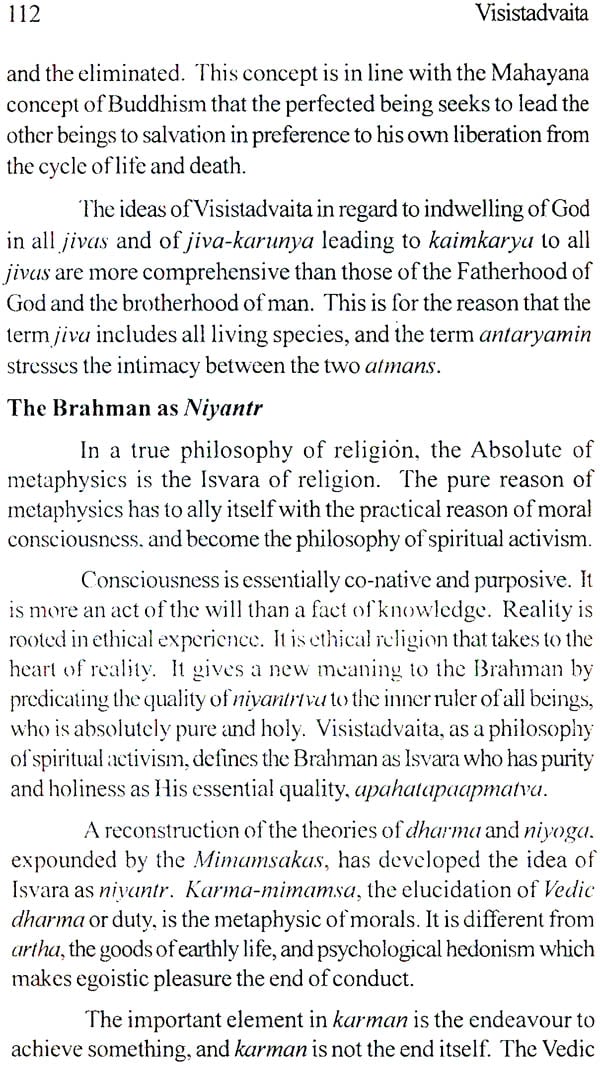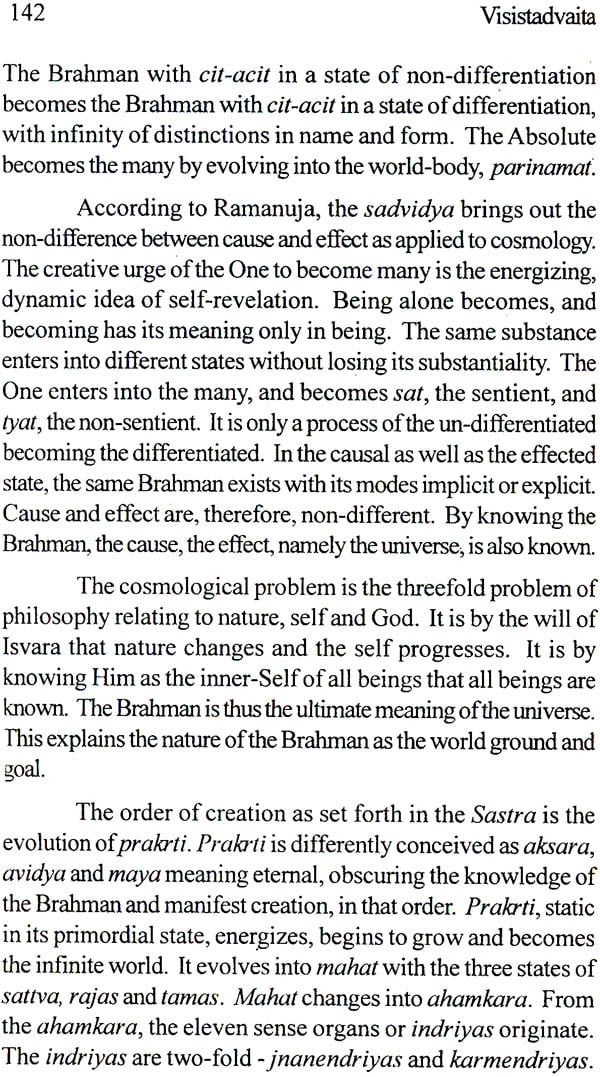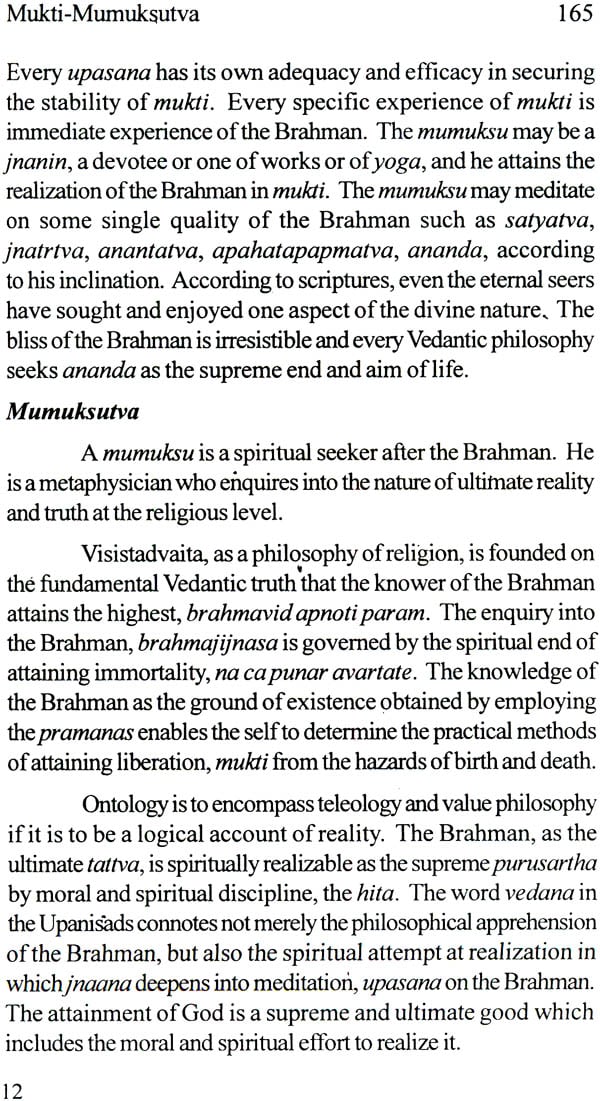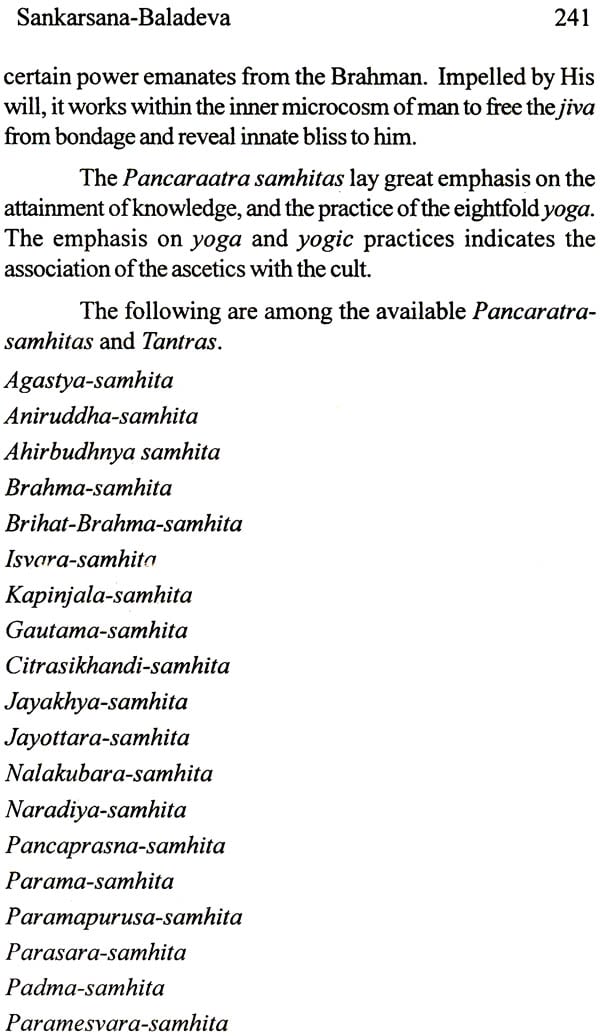
Visistadvaita (A Philosophy of Religion)
Book Specification
| Item Code: | NAG150 |
| Author: | K.R. Paramahamsa |
| Publisher: | Tirumala Tirupati Devasthanams, Tirupati |
| Language: | English |
| Edition: | 2010 |
| Pages: | 255 (2 B/W Illustrations) |
| Cover: | Paperback |
| Other Details | 8.5 inch X 5.5 inch |
| Weight | 260 gm |
Book Description
Visistadvaita, as a philosophy of religion, interprets metaphysics in terms of religion, and religion in terms of metaphysics. It equates the two by the common designation darsana. Darsana connotes a Vedanta philosophical system as well as spiritual perception of Reality, and may be explained as an integral intuition of the Brahman.
In extreme monism, the Brahman is jnaana and is realized by jnaana. Extreme theism distrusts the intellect and relies on scriptural faith. But in Visistadvaita, the Brahman can be enquired into as well as experienced. The soul-sense of God exalts conceptual knowledge, whichrationalizes the soul-sight of God.
Ramanuja integrates the experiences of risis and Alvars in relation to the Brahman, the Supreme Self. He expounds what is called Ubhaya Vedanta. As a philosopher-saint, he establishes the truths of Visistadvaita as embodied in the Vedanta sutras. Simultaneously, he elucidates each adhikarana of the Sutras as experience of the Brahman, brahmanubhava. He gives a critical exposition of the experiences of the Alvars by showing their logical coherence. As a saint, he experiences God; and as a philosopher, he proves the truths of spiritual experience. He establishes that Sribhashyam, his commentary on Vedanta sutras, and the Bhagavad-visaya, the logical exposition of the spiritual experiences of Nammalvar are similar in content and look to the Brahman as the Ultimate to be attained. He is thus the exponent of Vedanta as stated in the Vedanta-sutras and in Bhagavad-visaya and is, therefore, considered the architect of Ubhaya-Vedanta. The end and aim of Ubhaya-Vedanta is summed up in the Upanisad itself: ‘He who knows the Brahman attains the Highest’.
The catholicity of Visistadvaita lies in its synthetic insight into truth, and the spiritual transformation of such insight into universal love. Ramanuja’s synthetic method consists in his conclusion that all ideas and names ultimately connote the Brahman, Narayana, that the worship of deities like Indra is really the worship of Narayana, the Inner Ruler of all beings. The terms sarva-saririn, sarva-sabdavacya and sarva-raksaka refer only to the Brahman or Narayana.
Srivaisnavism, as a living religion, owes itself to Ramanuja. He has moulded it into a religion of sattvic love based on sastraic authority and spiritual experience. Visistadvaitic Vaisnavism lays stress on personal mystic experience rather than super naturalism and historicity. It guarantees God to all persons, and affords a philosophic basis for religious consciousness. For Ramanuja, God is love, the atman is eternal and the Paramatman is immanent. The idea of God as the saririn of all and as indwelling Love is the contribution of Ramanuja. This concept offers the most inspiring motive for philosophic enlightenment and achievement of social integration. Visistadvaita is not a mere metaphysical enquiry into the nature of the Brahman as the ground of existence, but also a spiritual method of attaining the Brahman as the supreme end of life. Thus Visistadvaita establishes itself as a philosophy of religion.
It is significant to note that the term Visistadvaita is generally translate into English as Qualified Non-dualism. What is qualified in VIsistadvaita is not Non-dualism, but the Brahman. Visistadvaita propounds that the Brahman is saguna as opposed to nirguna, though ontologically. It subscribes to the theory of Non-dualism, though of the Saguna Brahman. It is also significant to note that while Vaisnavism evolved predating the Christian era. Srivaisnavism, as a Vedic religion, has been the contribution of Vedic seers such as Ramanuja, Vedanta Desika, etc. These seers along with the Alvars have made Srivaisnavism a religion of spiritual realization.
This book Visistadvaita – A Philosophy of Religion borrows considerably from the work ‘The Philosophy of Visistadvaita’ by P.N. Srinivasachari, a very well researched and creative presentation.
| Preface | V | |
| 1 | Visistadvaita - A Darsana | 1 |
| 2 | The Theory of Knowledge Dharmabhuta-jnaana (Phenomenological Lconsciousness) | 7 |
| Svarupa-jnaana (Existential Consciousness) and Dharmabhuta-jnaana (Phenomenological Consciousness) - Interrelationship | ||
| 3 | The Theory of Judgment | 24 |
| 4 | The Theory of Relations | 29 |
| 5 | Truth, Error and Avidya | |
| Truth | 34 | |
| Error | 36 | |
| Avidya | 40 | |
| 6 | Nirguna Brahman and Saguna Brahman | 48 |
| 7 | Saguna Brahman | |
| The Brahman as Adhara | 60 | |
| The Brahman as Satya | 64 | |
| The Brahman as Jnaana | 68 | |
| The Brahman as Ananta | 76 | |
| The Brahman as Bhuvana Sundara | 80 | |
| The Brahman as Saririn | 94 | |
| The Brahman as Sesin | 105 | |
| The Brahman as Niyantr | 112 | |
| The Brahman as Redeemer | 125 | |
| 8 | Cosmology | 141 |
| 9 | The Psychology of Jivatman | 147 |
| 10 | Mukti-Mumuksutva | |
| Mukti | 155 | |
| Mumuksutva | 165 | |
| 11 | Ways to Salvation | |
| Karma-yoga | 169 | |
| Jnaana-yoga | 172 | |
| Bhakti-yoga | 178 | |
| Prapatti-yoga | 186 | |
| 12 | The Mysticism of Visistadvaita | 199 |
| 13 | The Theology of Srivaisnavism | 205 |
| 14 | Srivaisnavism of Visistadvaita | 213 |
| 15 | Evolution of Vaisnavism | 223 |
